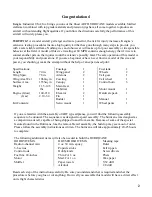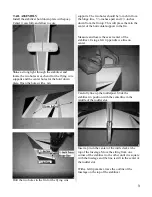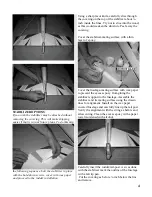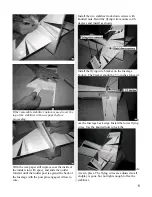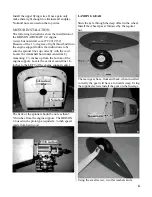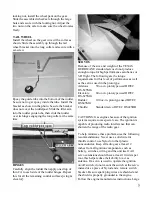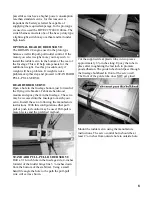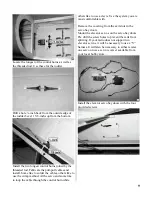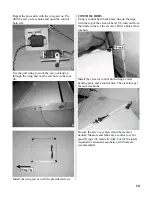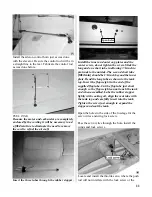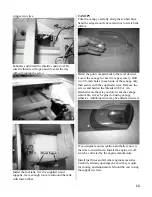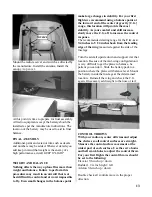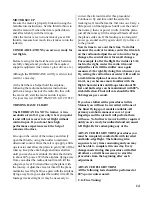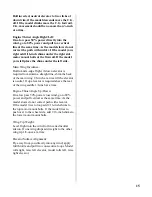
Congratulations!
Kangke Industrial USA, Inc. brings you one of the finest ARF HURRICANE models available. Skilled
craftsmen combined with top grade materials and precision jigs have all come together to produce an
aircraft with outstanding flight qualities. If you follow the directions carefully the performance of this
aircraft will surely please you.
WARNING!
As model aircraft get larger and more powerful, the risk for injury increases. Kangke’s
extensive testing procedures insure a high quality kit that has gone through many steps to provide you
with a safe reliable airframe. Nothing we can do however will make up for poor assembly or irresponsible
behavior at the field. A model of this size traveling at 80 MPH contains enough energy that if it were to
contact another person, the injuries would be extensive possibly fatal. The safe operation of this model is
your responsibility and yours alone. If you are a beginner or have never flown a model of this size and
power, you should
not
make the attempt without the help of an experienced pilot.
Specifications:
Length
70
in.
Wing Span
78 in.
Wing Area Wet
1062sq. in.
Surface Area
1355sq. in.
Weight
11.5-14.5
lbs.
Engine (Glow)
140-210
(Gas)
2.10-3.4
Kit Contents:
Fuselage 1
Wing panel
2
Ailerons 2
Cowling 1
Canopy 1
Main Gear
1
Stabilizer 1
Elevator 2
Fin
1
Rudder
1
Servo mount
1
Fuel tank
1
Wheels 2
Tail gear
1
Tail wheel
1
Control horn
6
Motor mount
1
Hardware pack
1
Manual 1
Wheel pants
1
If you are familiar with the assembly of ARF type airplanes, you will find the following assembly
sequence to be unusual. The sequence was designed to speed assembly. The hurricane was designed as
a competition aircraft, capable of being shipped to and from events. Because of some of the special
features found in the Hurricane, like the removable tail assembly, the build up may seem out of order.
Please follow the assembly instructions as written. The hurricane will take approximately 20-25 hours
to complete.
The following additional items will also be needed to build the HURRICANE
HOBBY ITEMS:
Radio 4-channel min.
4 oz. 30 min. epoxy
5-6 servos
Control rods
Fuel line 20-inches
Thin CA .5 oz.
Motor
Muffler
HOUSEHOLD ITEMS:
Popsicle sticks
Hobby knife
Med. CA 1 oz.
Paper towels
Alcohol
Masking tape
Ruler
Felt tip pen
Screw drivers
Pliers
Wax paper
5/32 drill
1/8 drill
Read each step of the instructions carefully. Be sure you understand what is required and what the
procedure is before you glue or cut anything. How well you assemble this model will have a direct effect
on its flight characteristics.
2


